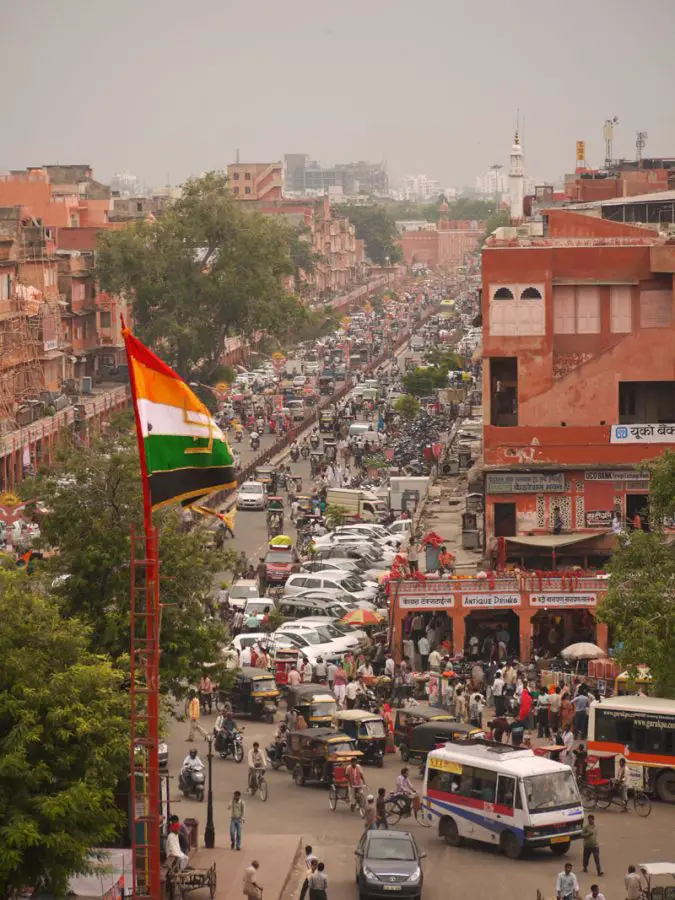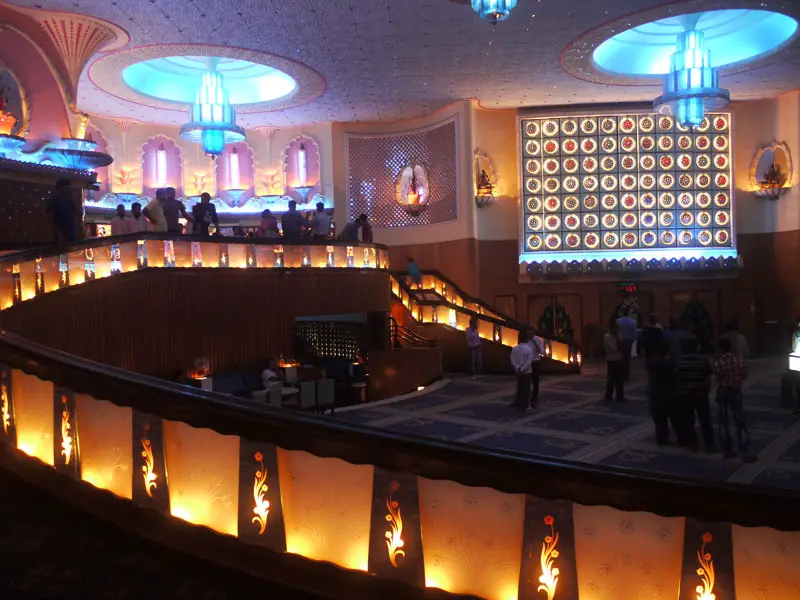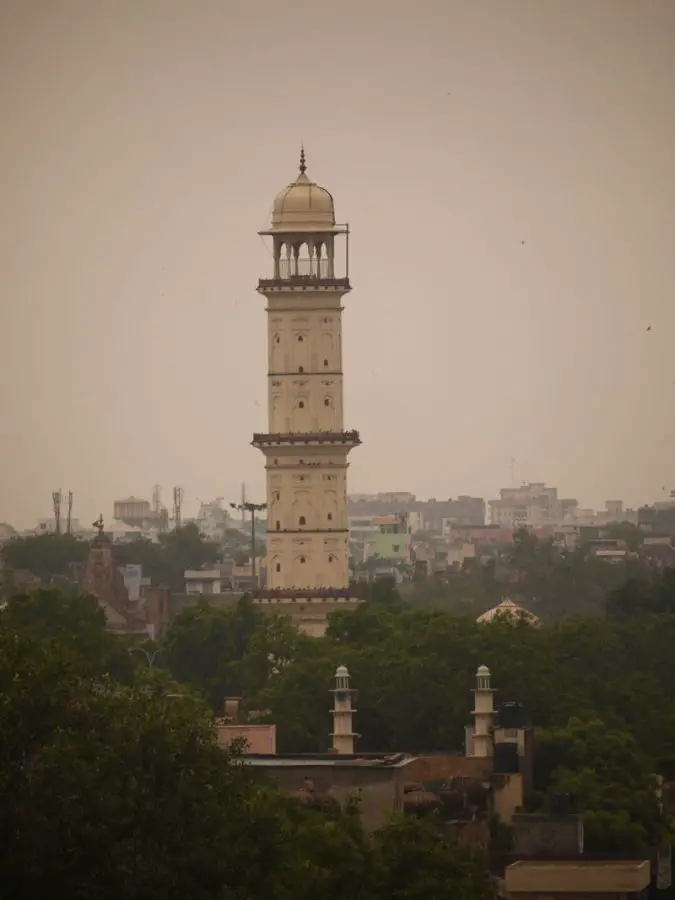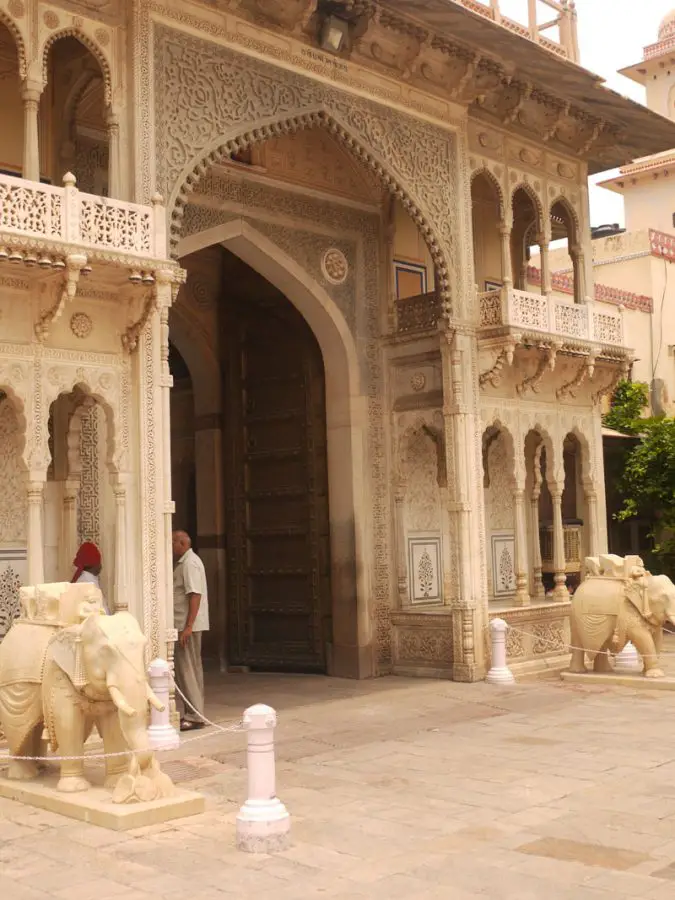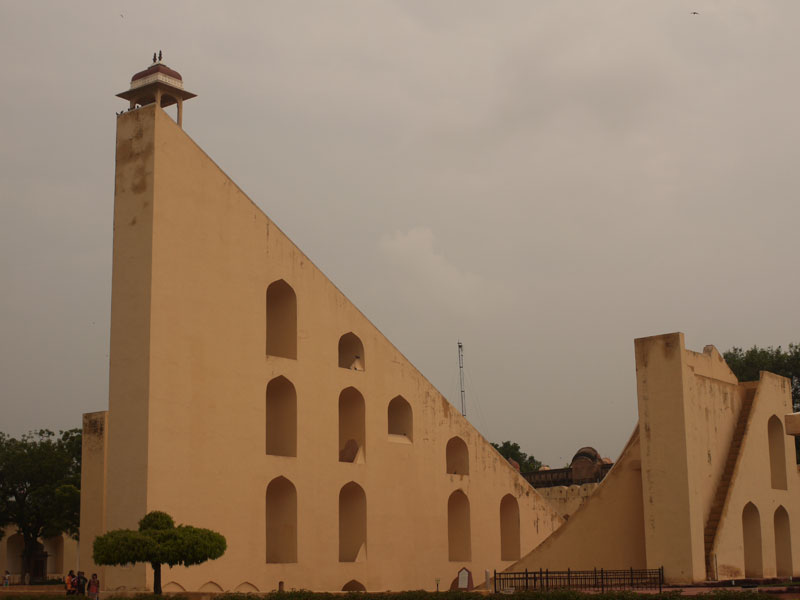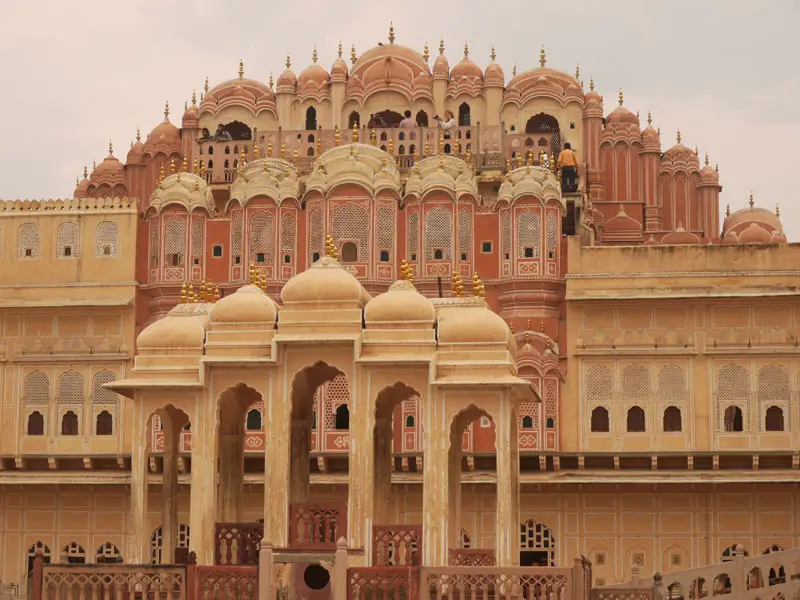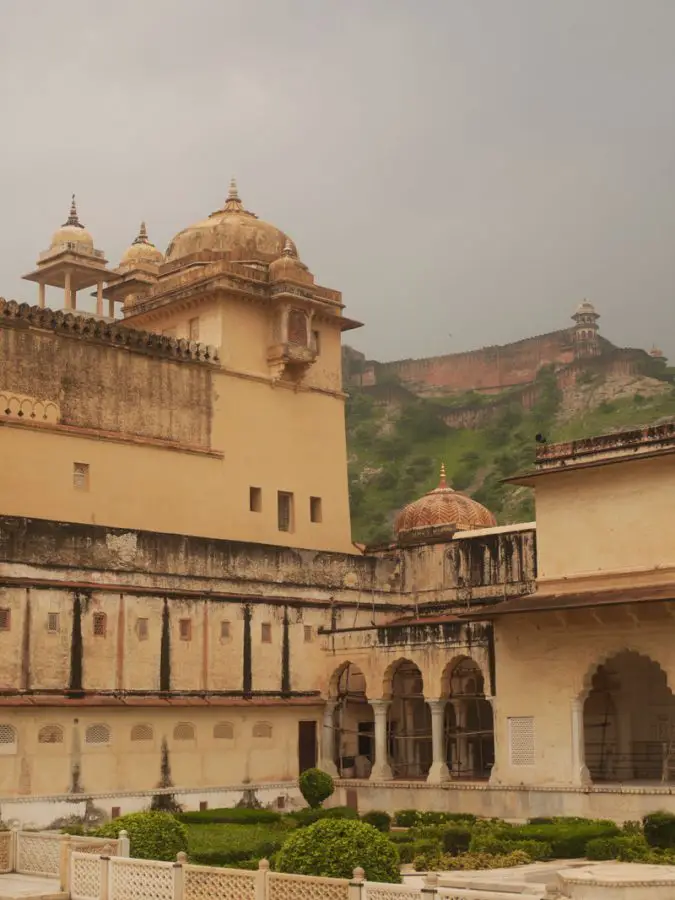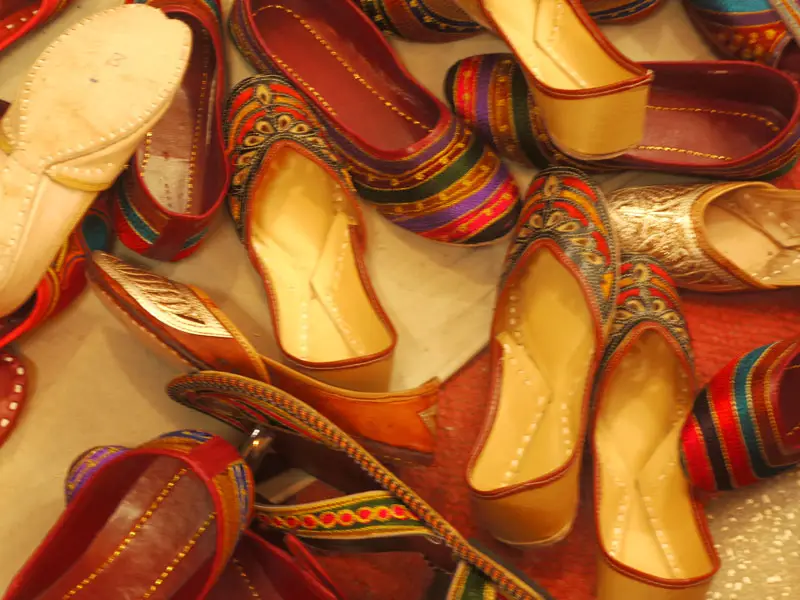The state of Rajasthan in the west of India is one of the country’s most iconic states and for good reason. Known as the Land of the Kings,throughout the state are luxurious palaces and dominating forts built by the maharajas of times gone by and some are still occupied by the royal families of today. Lively market places and bazaars are thronged with locals coming into the busy cities from the small villages beyond where working camels are common place and a different festival seems to be taking place every other day. Women wear bright, vibrant coloured saris which light up the streets in a manner different to anywhere else on the subcontinent.From the rolling dunes of the Thar Desert in the west to the thriving capital city of Jaipur in the east, it’s now wonder so many people are drawn to this expansive corner of India each and every year.
We began our Rajasthan adventure in the state’s capital, Jaipur which was founded by the warrior-astronomer Jai Singh II. The maharaja began construction on the capital in 1727 after the old capital, Amber, was unable to meet the water requirements for the kingdom which was becoming increasingly wealthy under the maharaja. The Pink City Jaipur is North India’s first planned city and Jai Singh’s scientific background is reflected in the city’s symmetry and some of it’s more iconic monuments and buildings. Jam-packed with must-see sights and a movie theatre famous throughout India we set about exploring this great city and all it has to offer.
Our first Hindi cinema experience was to be at the famous Raj Mandir movie theatre just off MI Road. Much to our dismay, no cheesy, dance-riddled, typical Bollywood movies were showing while we were in Jaipur and so we went to see Gangs of Wasseypur 2, a Quentin Tarantino style Indian movie. However, even though it wasn’t a typical Bollywood movie the audience’s reaction more than made up for it. At times it was more like being at a cricket match than a night at the movies. Hoots and hollers from the predominantly male audience throughout the movie made for a unique viewing experience and the volume of the applause and the shouts went through the roof whenever any of the female cast members appeared, especially if in any kind of romantic situation. Even in a movie of this genre the director still managed to meet all the criteria which make a typical Bollywood film typically Bollywood; featured in the movie was a birth, a death, a wedding and the required number of musical numbers was also met, quite an accomplishment considering the story line was something along the lines of The Sopranos.
Venturing into Jaipur’s Old City we checked out all the major attractions and this city is packed with them. Beginning at the Iswarmi Minar Swarga Sal, we climbed the narrow spiral staircase to the top of the 140 feet high, octagonal minaret, situated in the centre of Jaipur’s Old City. From the top we were afforded magnificent views of the famous pink city. A large boundary wall surrounds the Old City, which in 1876 maharaja Ram Singh had painted pink, the colour of hospitality, in order to welcome the Prince of Wales who later became King Edward VII. Since then, residents of Jaipur are bound by law to preserve the pink colour of the city. Standing at the top of the minaret looking out across the city, we could see quite plainly that the city was one colour but disappointingly it was not the bright pink colour we had imagined but instead was more of an orange-brown colour; the not-so-pink pink city Jaipur.
Next on our hit-list of sights was the incredibly lavish City Palace which still houses descendants of Jaipur’s royal family. Inside the gates of the palace we were stopped briefly to have our photos taken wearing traditional colourful rajasthani turbans and scarves but declined to have the photos put on mugs, magnets, postcards or any of the other tack they were selling. Another building in the back housed artists producing miniature paintings, an incredibly skilful Rajasthani art form where the artists paint with very fine paintbrushes under magnifying glasses. Also inside the palace walls are two huge silver water carriers, reportedly the largest silver objects in the world as documented in the Guinness Book of Records. For us the highlight of the palace was the back courtyard where four beautiful gates are set around the courtyard, each gate representing a different season. The most impressive of all is the peacock gate,constructed from coloured glass, five three-dimensional glass peacocks surround the door in a very elegant way. Luckily for us, we also got to witness a turban demonstration (paid for by a groups guide), one of the men working in the palace grounds undid his turban and the size of it was absolutely staggering, about ten feet long and three feet wide! It was bizarre to watch as it took two men to wind it carefully until the entire piece of material balanced perfectly back on the man’s head.
Directly across the road from the palace is a strange collection of structures built by Jai Singh in 1728. Singh was a man of science and was a keen astronomer. This collection of strange structures is known as Jantar Mantar, which is derived from the Sanskrit, yanta mantar, meaning ‘instruments of calculation’. The maharaja sent men overseas to study foreign constructions before building five observatories across India, of which this is the biggest and best preserved. Inside the walls are a giant sundial, instruments for measuring the position of the stars, the altitude, the time, the date and even for predicting eclipses. Instruments designed by Singh are incredibly accurate and today they can still accurately tell the time to within two minutes.
A short auto-rickshaw ride away and we were standing outside another of Jaipur’s famous attractions, the beautiful Hawa Mahal. This is probably Jaipur’s most distinctive landmark and once inside you can really get a feel for how lush a lifestyle the royalty of the time had. Constructed of pink sandstone the building is five-storeys tall and resembles a honeycombed bee hive. It was built in 1799 in order for the women of the royal household to view processions on the streets outside in complete privacy. The lattice screens which cover each and every window are designed in such a fashion that the women could see out but any leering eyes outside could not see in; the tinted windows of the era. From the roof you can see down the busy streets of the Old City, Jantar Mantar across the pink roofs and off to the distance perched on top of a sheer ridge, Nahargarh Fort stares back across the city.
A short drive outside of the city is another fort known as Amber Fort but it’s more of a palace than a fort. Constructed from pale yellow and pink sandstone and white marble it sits on top of a hill overlooking Monta Lake below and the fort’s walls stretch out across the hilly countryside. Inside the fort walls are a remarkable number of rooms, corridors and hallways and even some secret passageways exist which the maharaja would use to discreetly visit his various wives and mistresses rooms at night without each of them knowing. The interior of the palace is decorated with mirrors, coloured glass, huge paintings and marble relief panels all of which demonstrate the luxurious lifestyle which the royalty of this era enjoyed to no end.
Driving back from Amber Fort into the centre of Jaipur we passed a few working camels, walking down the street pulling carts with heavy loads behind them. Further down the road we again drove past some of those buildings and monuments which we had visited during our time in Jaipur and we were reminded of the great history which this city is famed for. The road continued towards our guest-house through the market place where people were buying and selling all the fresh produce you could imagine, brought in from the surrounding villages in the area. In the middle of this bustling state capital of 3.2million permanent residents is an opportunity to see the lifestyles of the rich and famous of a time gone by but it’s truly amazing to see how in this modern-day of technology and advancements that the ways of the old are still alive and kicking. In Jaipur the new and the old exist in perfect harmony together and it’s a testament to how a city can modernise without losing a sense of itself.

Brian is a travel writer, photographer, blogger, travel addict and adventure-junkie. Being outdoors, getting off the beaten track and outside his comfort zone is what makes him tick. Brian’s the dreamer in the relationship; when he’s not travelling, he’s dreaming about it! Keeping fit, cooking, music and red wine take up the rest of his time.
Sign up for our free travel photography Ebook "Faces of Nepal" and you'll also receive our monthly newsletter.

